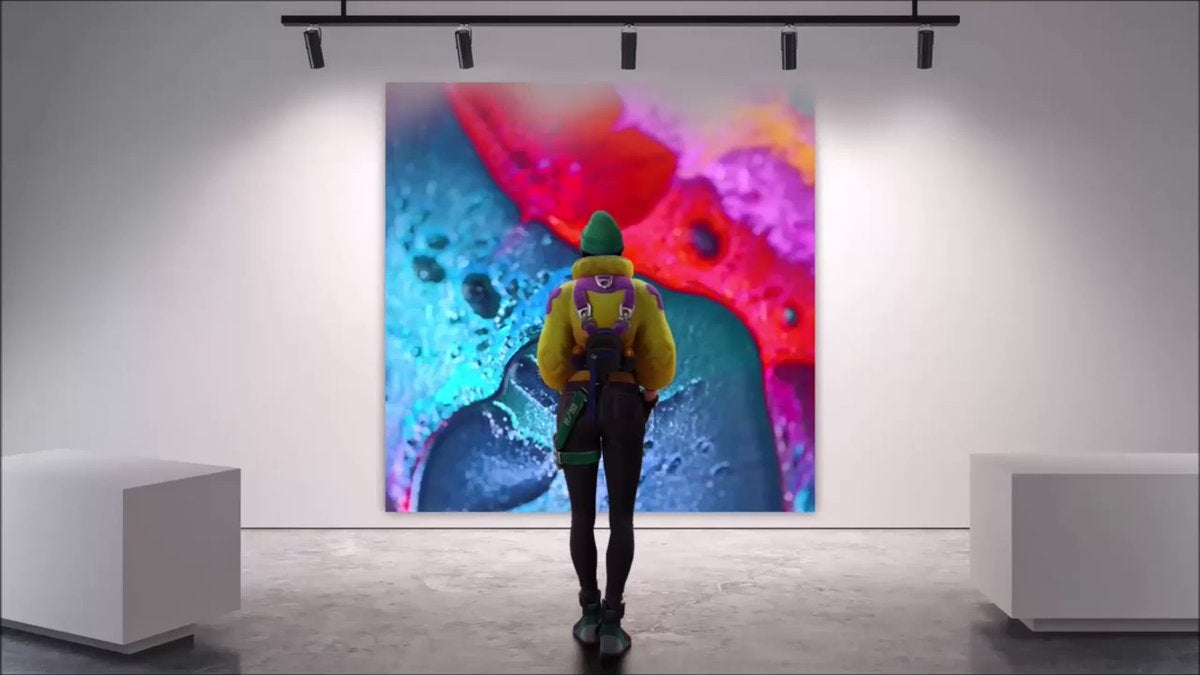Valorant’s regional German-language Twitter account this week posted silly tweets with the game’s cheery German wizard touring her hometown of Berlin. She had a doner kebab: She rode the U-Bahn: And she briefly admired a piece of computer-generated art by Australian artist Martin Houra, who sells his work as NFTs for cryptocurrency. NFTs being as controversial and unpopular as they should be, Riot quickly deleted this. Not before the Wayback Machine archived it. “Whoopsie!” the German account said in a bilingual statement posted later. It explains the team were just having fun and japes, they thought people might enjoy sightseeing with Killjoy, and they thought “since Killjoy loves programming” some computer-generated art would be nice to include. Whoopsie. “However, we were not aware that the selected work as an NFT,” they stressed. “In no way did we intend to include NFTs as part of Killjoy’s work and hobbies.” NFTs, so poisonous that a company rush to insist that a popular fictional character does not like them. If you’re lucky enough to have avoided NFTs, allow me to briefly explain. In the digital art world, NFTs are basically digital receipts saying that you bought an artwork, only you don’t buy the artwork or own it in any way, and everyone else can still see the art, and only other people who buy these stupid receipts will be impressed by your stupid receipt. For example Konami sold NFTs of Castlevania pictures and videos for £119,000. Inside video games, this can be more insidious. The most harmless version is basically what Valve have been doing with Dota and CS:GO for years, having virtual items that players can sell to each other—but tracked ‘on the blockchain’ because shareholders are impressed by the latest buzzword. On a more gross level are those games being built around NFTs for items which actually affect how you play. Peter Molyneux’s next game sold £40 million in virtual land NFTs so players can make money as landlords renting out lots for other players to build factories on, which sounds just the worst. Then there are the many supposed NFT metaverse MMOs which will likely never be made, or won’t be played if they are made, but might make money by selling their own stupid cryptocurrency to speculators. Talk about NFTs in games seems either overhyped or horrible. Most big companies have yet to leap in, talking about interest in NFTs but not publicly doing anything. Aside from Ubisoft, that is, who tried NFT hats and were promptly shouted at by everyone. Ubisoft have since said ’nuh uh ur stupid’. lol. I was delighted when Yanis Varoufakis, ex-Valve economist and former Greek finance minister, recently said that the endpoint of the supposedly utopian ‘play-to-earn’ model would be “the apotheosis of misanthropy”. Riot might have some interest, mind. Brazilian site Livecoins reported last year that Riot had filed for a trademark for Wild Rift, the mobile version of League, which would also cover NFTs and blockchain jazz. That might just be caution, and I suppose I don’t blame companies for considering the idea. But I do strongly blame them if they follow through.
